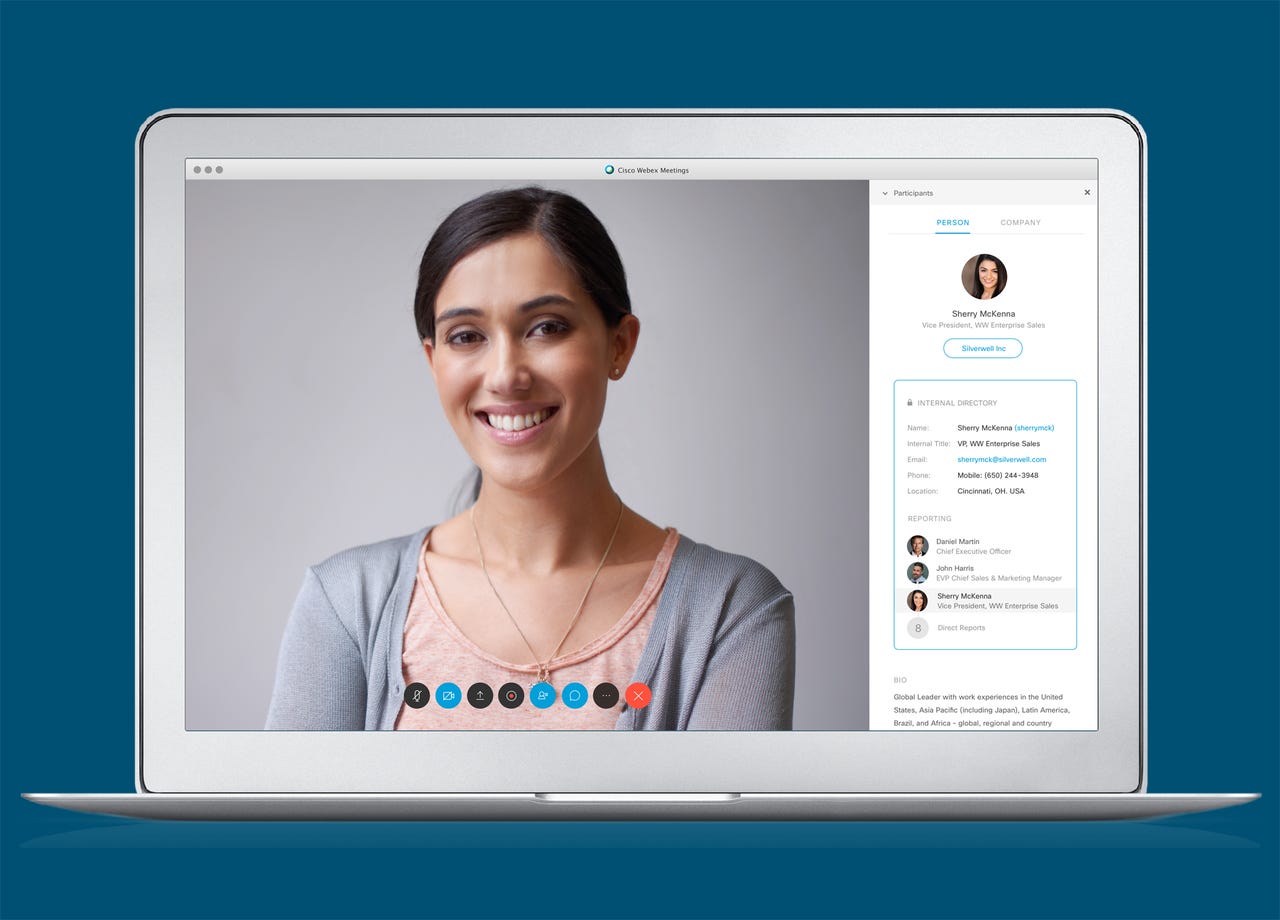Cisco introduces new cognitive collaboration features for Webex


Webex Meetings is getting a new feature called People Insights, which combines internal data with information pulled from the web to create a rich, dynamic profile of meeting participants.
Cisco on Tuesday announced a series of new AI-driven features for Webex, the videoconferencing tool used by around 130 million people monthly. The new features will help users get meetings started more quickly and easily learn more about the people they're meeting with.
The new features are part of Cisco's "cognitive collaboration initiative," according to Keith Griffin, CTO of Cisco's Team Collaboration Group. The initiative, he said, is about taking raw data from collaboration and enterprise environments and applying machine learning to generate helpful context.
Cisco's approach to AI, he said, has been "not just about what's achievable, but about what would make the most effective difference for users." The Webex features, he said, demonstrate how Cisco's aiming for practical solutions -- not just "things that make good demos."
First, Cisco is adding a feature called Proactive Join to Webex Assistant. The feature will proactively ask a user if they'd like to join their meeting when they walk into a meeting room. It relies on Cisco's intelligent proximity technology to determine the user's location from their mobile device. It also depends on information taken from the user's calendar.
While the feature is a late addition to Webex Assistant, Cisco saw huge adoption rates for Proactive Join in its field trials, Griffin said. "We found this was one of those features where people genuinely got a benefit of starting the meeting on time," he said.
Webex meetings can start with one click, but sometimes users simply don't take that step right away, Griffin said. "Then suddenly, it's six minutes past when the meeting starts."
Along with Proactive Join, Webex Assistant is getting a new feature called First Match, which uses the conversational AI Cisco acquired with MindMeld in 2017 to help users connect with the right person. For instance, if a user says, "Call Susan," First Match will determine which Susan you communicate with the most via Webex Teams spaces to find the right match.
If it's not right the first time, the feature will come back with a few alternative choices. In early field trials, Webex gave customers its top three guesses, but its top pick was accurate enough that users preferred to simply get the first match.
Webex Assistant, along with First Match technology, is now generally available now across the entire Webex Room Series. Proactive Join is available on a limited basis and will be generally available in June.
Meanwhile, Webex Meetings is getting a new feature called People Insights. Based on technology from Cisco's 2018 Accompany acquisition, the feature combines internal data with information pulled from the web to create a rich, dynamic profile of meeting participants. It's displayed in a box during the meeting.
Meeting participants can control the information that's displayed about them through the settings page. Along with information about a person's background, the information displayed can show information about their company such as stock prices and recent headlines.
Additionally, Cisco on Tuesday announced new facial recognition capabilities within Webex. Using a Webex device, a user can identify all of the individuals in the room. The feature, which will be available in June, was built with data privacy as a priority, Griffin said.
The feature starts with a profile picture that a user submits via the settings page. The system scans the picture and gives it an identifying number, which represents the user. Then, during a meeting, the system will scan the faces of meeting participants and use the same algorithm to calculate an identifying number for the participants -- that calculation happens locally. The information is encrypted and then matched against the numbers stored.